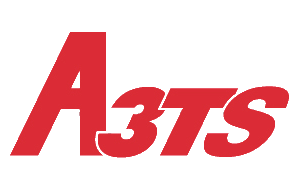2024 Innovation Awards
A3TS 2024 Innovation Award: Orano Mining CIME, winner for the European ScaVanger project




The A3TS 2024 Innovation Trophy was awarded to Orano Mining CIME for the European ScaVanger project.
What is the ScaVanger project?
This project aims to develop sustainable scandium production in Europe by recovering by-products from the titanium industry. Scandium can be used for advanced alloys for future aerospace needs. Orano's CIME, coordinator of the ScaVanger project, is an R&D center that has defined innovative processes and validated them by designing, building and operating industrial-scale pilots at Bessines Sur Gartempe (France).
Scandium production in Europe will benefit the aerospace industry by enabling the design and manufacture of light, strong alloys to improve aircraft performance, particularly for electric and hydrogen-powered aircraft, for which weight reduction is essential.
The process developed involves connecting a loop directly to an existing flow in the TiO2 production plant, where scandium is present in interesting concentrations. Once the scandium has been extracted, this flow is returned to the plant without disturbing TiO2 production. The extracted scandium is then processed to obtain an intermediate product, scandium hydroxide, with a scandium purity of between 40 and 45%. Depending on market demand and end use, this scandium can be refined to scandium oxide or fluoride with a minimum purity of 99.9%. The main challenges were not to disrupt existing production by TiO2 producers, and to comply with European regulations governing this process. Primary mining projects are under development with Scandium Canada at Crater Lake and Rio Tinto at New South Wells. There is also a primary scandium operation in China (2/3 of current world production). There is no production in Europe.
The aluminum and scandium alloy will help reduce aircraft weight and contribute to the development of electric and hydrogen-powered aircraft. At the same time, it will preserve Europe's total independence of supply. These technologies are ecologically sound and will reduce our impact on the environment.
Four other innovations competed for this award:
Friedr. Lohmann Gmbh Edelstahlgießerei : Heat Resistant Barcode
The traceability of products and their manufacturing processes is becoming increasingly important. Complete documentation of processes and parameters is desired, even demanded, especially where components for sensitive applications or safety-relevant components are concerned. For the first time, the new "Heat Resistant Barcode" enables complete traceability of heat treatment racks. The "Heat Resistant Barcode" is available in several standardized versions, for example for base trays, baskets or stacking grids. All barcodes contain both the barcode and the number in plain text.
DataPhysics Instruments : PCA 200 portable contact angle goniometer
The PCA 200 portable contact angle goniometer from DataPhysics Instruments is a surface energy meter. Its main features are as follows:
fast, non-destructive measurement of surface energy on solid surfaces of all sizes
portable, stand-alone device with touchscreen for on-site measurements, e.g. as part of quality control or directly in production processes
automatic determination of surface energy with a single click and direct display of results on the device screen
simultaneous dosing of two drops with the test liquids water and diiodomethane.
IRT M2P: Low-pressure carbo-nitriding treatment enabling high fractions (~60%) of residual austenite
The current treatment uses pulses of C2H2 and NH3 to enrich the surface of a 23MnCrMo5 steel with interstitial elements (i.e. carbon and nitrogen). The number of pulses, time, pressure and temperatures were chosen so as to obtain 60% austenite (by volume) near the surface, with a limited amount of CrN and Fe3C. It was measured that after tempering and shot peening, this high austenite fraction improved fatigue and impact properties.
IRT M2P: Surface finishing of additively manufactured TA6V: Formulation of a new generation of chemical polishing baths
Laser powder bed fusion (L-PBF) is gradually finding its way into many industrial applications. While this technology is making considerable progress, enabling the production of ever higher quality parts, surface quality requirements are becoming increasingly stringent. Roughnesses in the micron range are now expected in certain industrial specifications. To meet this requirement, a new generation of chemical polishing baths has been developed as part of the NEMO project supported by IRT M2P. The results obtained on TA6V parts enable sub-micron roughness values to be achieved.
